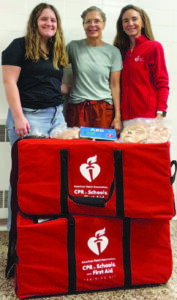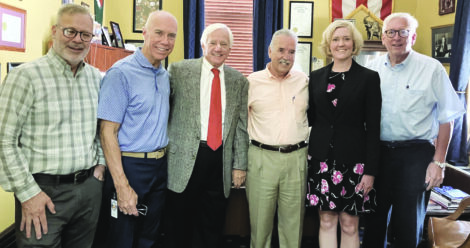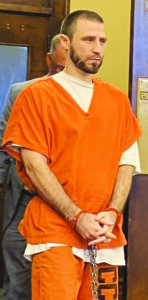Rail unions rally against automated track inspections with townhall in Columbiana
COLUMBIANA – With the Federal Railroad Administration (FRA) weighing the benefits of automated track inspection technology, rail labor unions are speaking out against it, citing both concerns of potential job losses and safety implications if railroads are allowed to cut down on or replace human inspections.
On Saturday, two of those unions — Brotherhood of Locomotive Engineers and Trainmen (BLET) and the Brotherhood of Maintenance of Way Employees Division (BMWED) — came together in Columbiana to voice those concerns. The site of the Teamsters Rail Conference’s rail safety town hall at the Best Western Plus Dutch Haus Inn & Suites was not accidental or incidental but deliberately chosen close “to the site of one of the worst rail safety disasters in American history” — the 2023 train derailment in East Palestine — and was meant “to shine a spotlight on the ways in which railroads continue to endanger workers and communities.”
“Just miles from East Palestine, BMWED and fellow rail unions gathered in Columbiana to call out the rail industry’s dangerous push to cut back on critical human track inspections,” the BMWED said. “The conversation focused on the risks of reducing visual track inspections with automated track inspection, while labor leaders also raised alarms about reductions in signal, grade crossing, railcar, and locomotive inspections — all of which are essential to preventing derailments and keeping our communities safe.”
Speakers included Tony Cardwell, president of the BMWED, who spoke about the risks posed by railroads’ attempt to bypass key safety regulations through automated track inspection and Vincent Verna, vice president of the BLET, who discussed dangerous zero-to-zero technology that relies on computers to start and stop freight trains, removing the ability of locomotive engineers to operate them manually.
In April, the American Association of Railroads (AAR) sent a waiver to the FRA on behalf of its members to ask that the use of Track Geometry Measurement System (TGMS) be allowed “in lieu of the visual track inspection requirements.”
AAR insists that “TGMS technology is far superior to the human eye in identifying certain types of defects in railroad tracks” and enabling railroads to “switch from reactive to preventative maintenance practices” and have an earlier detection of track defects.
“A strictly visual approach to inspections results in defects only being addressed when they become apparent to an inspector observing the track,” the AAR wrote in the waiver.
The BLET, BMWED and other rail unions like the SMART — the International Association of Sheet Metal, Air, Rail and Transportation Workers — maintain the opposite.
“The AAR wants permission from the Federal Railroad Administration to reduce human visual track inspections by 75%, claiming it will replace the human inspectors with Automated Track Inspection (ATI) systems. But here’s the truth: ATI misses 73% of defect types that human inspectors catch,” SMART said. “That’s not safety, it’s a shortcut. When shortcuts fail on the railroad, people die.”
ATI, like TGMS, uses a variety of advancements like sensors, inertial measurement units, lasers, and cameras to measure and analyze the geometry of railway tracks to identify potential safety hazards or areas needing maintenance.
Norfolk Southern (NS) has been both an advocate and a leader in advancing technology to survey the integrity of its infrastructure.
It became the first North American freight railroad to develop and deploy the autonomous track inspection system in 2020. The NS autonomous system is mounted to locomotives inspecting the track while the train is pulling freight on its nearly 20,000-mile network and passes that information on to a team that can act on that information.
Norfolk Southern has said that technology and similar technology only enhances safety. Since 2020, the automated track inspection has been used in concert with visual inspections.
The FRA current rules require that tracks get two human inspections per week. However, under the AAR’s waiver request, required human inspections would fall to two per month.
SMART said “that potentially broken tracks would remain in service for days on end, with nothing more than a computer readout and a 72-hour wait-and-see policy if a defect is found.”
Ultimately, the unions accuse the railroads of putting profits over people — again.
“Don’t be fooled by the AAR’s language. They’re not asking to use ATI. They already can, and as often as they like. There is no regulation that prevents it,” SMART said. “What they’re really asking for is permission to get rid of track inspectors’ paychecks, which are an investment in employees who know the tracks the best.”



